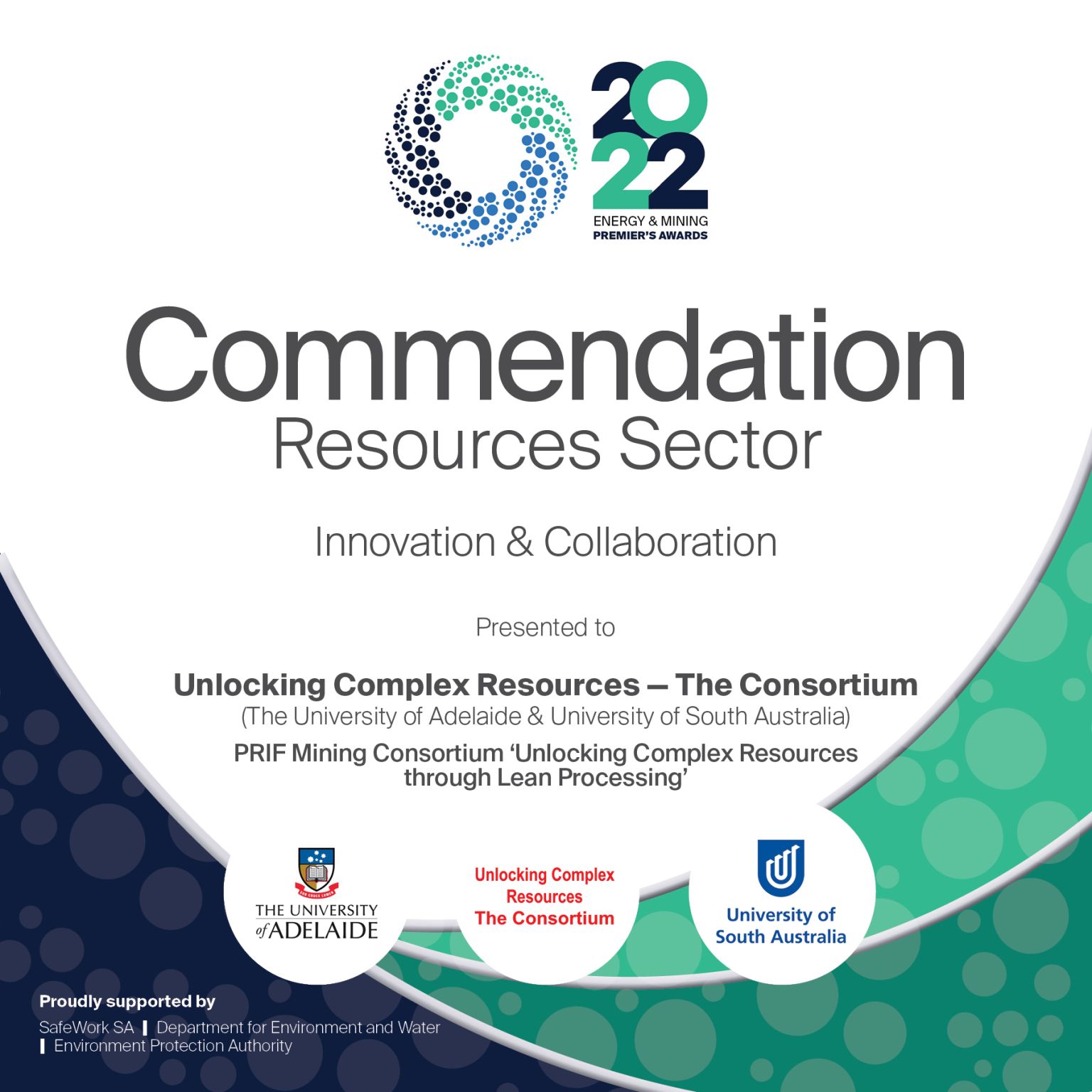About
There’s no stopping it. Artificial intelligence is here and it’s coming to a mine near you.
We saw it coming. In 2017, we secured $4 million from the South Australian Premier’s Research and Industry Fund Research Consortia Program (PRIF RCP) plus $1 million from industry to set up this consortium and join the revolution.
Aims
The Integrated Mining Consortium is applying Industrial Internet of Things (IIOT), advanced sensing, data analytics and machine learning to improve mining operations, mineral processing and recovery. We are looking at the entire mine value chain from in-place resources to final products.
The ultimate aim is to increase the value of complex resources. Complex minerals are those that are increasingly harder to mine or process.
Benefits
- Rapid decision-making
- Maximum value and productivity
- Lower capital and operating costs
- Contribute to zero entry mining
- Reduced environmental impacts
Vision: Maximum value and lower costs for mineral production using machine learning, sensors, data analytics and optimisation.
The PRIF Consortium
- The PRIF Mining Consortium team received a Commendation for Innovation & Collaboration in the Resource Sector at the 11th Annual Premier’s Awards in Energy and Mining in December 2022
- Is a 6.5 year government initiative started in October 2017
- The Consortium end date is 31st August 2024
- Has cash and other support from 16 industry partners and 2 university partners
- Is nimble to member needs, tailoring each project to one or more of our industry partners
- Consists of two Programs: Program A - Upstream and Program B - Downstream
- Has 14 Research Projects (RP) and 11 Translation Projects (TP) within Programs A and B
- Has 15 experienced researchers in mining, mineral processing and computer science, 8 postdoctoral researchers (PDRF) and 10 higher degree by research (HDR) students
- Masters, Honours and Bachelor students from both universities are successfully working on projects relevant to the Consortium objectives
- Has awarded 17 Women in Mining Technology Scholarships from 2019 to 2022
- Has over 120 published papers
- Four (4) project have been identified as potentially implementable and will be commercialised over the next 18-months (March 2023 to August 2024): ARP3, ATP4, BRP3 and BTP9.
The challenges
Resources are more diverse in character and content than ever. Heterogeneity and the resulting feed variability make mining and mineral processing more costly. In many – perhaps most – parts of the world, ‘easier’ resources have already been accessed.
Conventional processing only operates in an in-line manner to deliver the mine plan. High capital and operating cost (machinery, consumables and energy costs) and energy intensive processing may be applied to the entire Run of Mine ore, even when lower cost processing would be more efficient for some batches of ore.
The challenges we aim to address are:
- Variable and decreasing grade and mineralogy
- More difficult mining conditions at depth with risk of dilution exacerbating resource heterogeneity challenges
- Variable ore hardness due to variable lithology
- Fine grained mineralisation
- Variable recovery and high reagent consumption in leaching
- Increasing energy costs
- A shortage of people with high level capability in computer science, mining and processing
The mine of the future
Artificial intelligence technologies, enabled by sensors, data analytics, optimisation and real time decision making, will target resource attributes to optimise downstream processing and maximise value. At the same time, they will rapidly deliver feedback to mine operators.
Armed with real-time information about resource attributes as they travel the mine chain, operators will be able to strategically alter the mine plan on the fly. Examples include:
- Rapid feedback on dilution to optimise drilling and blasting in mining
- Rapid feedback to mine operators on blast design and stope/cave operation to control fragmentation
- Better and more rapid data to control draw points to increase certainty for the delivery of known mill feed types at the right time
- Parallel processing strategies to optimise overall value by delivering the right part of the resource to the right process

